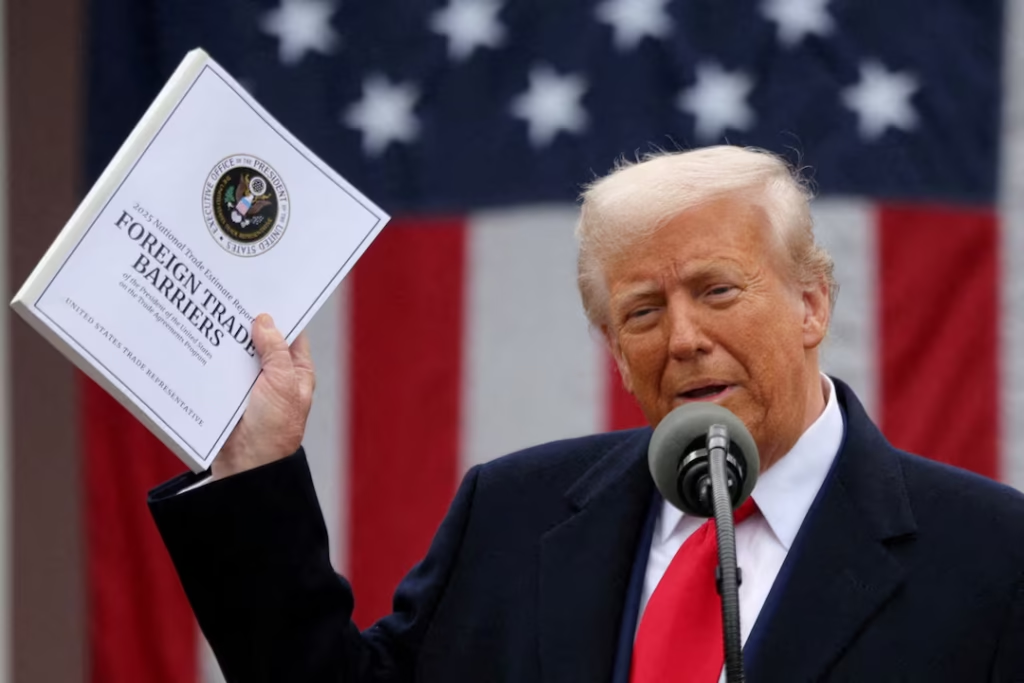Trump Tariff Letters are once again making headlines, and this time, their impact on the global economy could be even more disruptive. Former U.S. President Donald Trump recently stated that letters regarding new tariffs are “imminent,” triggering immediate concern across stock markets, global trade sectors, and financial analysts. With just a few words, Trump sent ripples across Wall Street and beyond.
But what exactly did he say, and what do these letters mean for businesses, investors, and everyday consumers? Let’s break it all down.
What Are Trump Tariff Letters?
Tariff letters are formal notifications sent to U.S. trading partners or regulatory agencies, indicating a planned increase in import duties. In simple terms, tariffs are taxes on goods coming into the country, and these letters are often the first official step in implementing them.
Trump has a long history of using tariffs as a negotiation tool, especially during his presidency from 2017 to 2021. This recent announcement suggests he’s planning to reignite that strategy, and markets are reacting fast.
What Did Trump Say?
Speaking during a rally and later reaffirming his stance in an interview, Trump claimed that new tariff letters would be issued “very soon.” Though he didn’t specify which countries or products would be targeted, his tone indicated a broad approach.
“We are preparing tariff letters that will make America stronger and force others to treat us fairly in trade,” Trump said.
The ambiguity in his statement only added to the uncertainty. Investors don’t like surprises, especially when they involve trade wars.
How Did the Markets React?
Shortly after Trump’s comments, financial markets experienced notable volatility:
- The Dow Jones Industrial Average dropped over 300 points within hours.
- S&P 500 saw a sharp dip before partially recovering.
- NASDAQ, which includes many tech companies that rely on global supply chains, faced a more significant decline.
Currency markets were also affected. The U.S. dollar gained briefly due to a “risk-off” sentiment, while emerging market currencies weakened, fearing U.S. trade aggression.
Why Do Tariff Letters Unsettle Markets?
Markets are forward-looking. When Trump talks about tariff letters, investors anticipate:
- Higher costs for businesses, especially those that rely on imported materials.
- Price hikes for consumers.
- Retaliatory tariffs from other nations, which can hurt U.S. exports.
- Supply chain disruptions, especially in industries like tech, automotive, and agriculture.
In short, tariffs can slow economic growth, and the threat of them often leads to a more cautious market environment.
A Look Back: Trump’s Tariff Legacy
To understand why his latest announcement is taken so seriously, we need to revisit his previous use of tariffs:
China Trade War (2018–2020)
- Over $360 billion in Chinese goods were taxed.
- China responded with tariffs on U.S. goods like soybeans and aircraft.
- U.S. farmers, manufacturers, and tech firms were hit hard.
Steel and Aluminum Tariffs
- Aimed at protecting U.S. industries.
- Sparked global criticism and retaliatory measures from allies like the EU and Canada.
Trump’s aggressive trade policies were a cornerstone of his “America First” approach. While some argue they brought leverage in negotiations, others highlight the cost to consumers and global alliances.
What Could the New Tariffs Target?

Trump hasn’t shared specifics yet, but experts are speculating based on his past preferences:
- China – Still the most likely target due to ongoing tensions.
- Mexico and Canada – Particularly if issues arise with immigration or trade imbalances.
- European Union – Possible focus on cars or agriculture.
- Tech components – Especially items used in semiconductors or green energy.
What Does This Mean for Consumers?
If Trump’s tariff letters become active policy, the impact could be felt by regular Americans in multiple ways:
- Higher prices for electronics, clothes, food, and cars.
- Slower job growth in industries that depend on global trade.
- Reduced variety of products due to limited imports.
In short, tariffs can function as a hidden tax. While they aim to protect local industries, they often raise the cost of everyday goods.
Global Reaction and Retaliation Risks
Other countries are unlikely to stay quiet if new U.S. tariffs are imposed. Trade partners like China, the EU, and Canada may:
- Impose retaliatory tariffs on U.S. goods.
- Redirect supply chains away from U.S. businesses.
- Challenge the tariffs at the World Trade Organization (WTO).
This tit-for-tat cycle could escalate tensions and reduce global trade volume — not good news for an already fragile post-pandemic economy.
Analyst Predictions: What’s Next?
Economists and trade experts are divided but cautious:
- Morgan Stanley analysts warned that new tariffs could knock 0.5% off U.S. GDP growth.
- Goldman Sachs noted that increased trade tensions might boost inflation just as the Fed is trying to bring it down.
- Others believe Trump’s announcement may be more political posturing than a concrete policy — especially with the 2024 elections in mind.
Political Implications
Trump’s tariff rhetoric plays well with parts of his political base, particularly those in manufacturing-heavy regions. By positioning himself as tough on trade, he contrasts with current President Joe Biden, who has taken a more multilateral approach.
Some view the tariff letters as a campaign tool, meant to energize supporters and stir debate. Whether they translate into action remains to be seen.
Business Leaders React
Several CEOs and trade group leaders have already responded:
- National Retail Federation: “Tariffs are a tax on American families. We urge all policymakers to avoid policies that raise costs.”
- Auto Manufacturers: Expressed concern about supply chain risk and higher production costs.
- Agriculture Groups: Warned that retaliatory tariffs could once again hurt U.S. farmers.
Their message is clear — uncertainty is bad for business.
What Should Investors Do Now?
Financial advisors recommend the following steps:
- Diversify your portfolio to hedge against market swings.
- Monitor trade news closely.
- Stay calm and avoid panic selling.
Tariff talk can cause short-term jolts, but long-term effects depend on implementation and global response.
Conclusion: Trump Tariff Letters Could Reshape Trade Again
Whether or not the new Trump tariff letters lead to actual tariffs, they’ve already succeeded in rattling markets and reigniting debate over trade policy. For now, investors, businesses, and global leaders are in a wait-and-see mode — watching closely for the first letter to land.
As with previous trade moves, the consequences of these letters won’t be isolated to just Washington. From Wall Street to Beijing, from farmers in Iowa to tech factories in Vietnam, the ripple effects could be far-reaching.
Read Next – ICE Crackdowns and Local Economies: A Growing Climate of Fear





